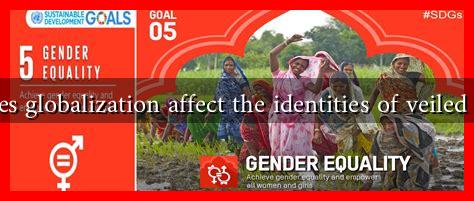-
Table of Contents
How Does Globalization Affect the Identities of Veiled Women?
Globalization has transformed the world into a more interconnected space, influencing various aspects of culture, economy, and identity. One of the most profound impacts of globalization is on the identities of veiled women, particularly in Muslim-majority societies. The veil, often seen as a symbol of oppression or liberation, is a complex marker of identity that is shaped by global interactions. This article explores how globalization affects the identities of veiled women through cultural exchange, economic opportunities, and social perceptions.
The Veil as a Cultural Symbol
The veil, or hijab, is not merely a piece of clothing; it is a cultural symbol that carries different meanings across various contexts. Globalization has facilitated the exchange of ideas and practices, leading to a re-evaluation of the veil’s significance. In many Western societies, the hijab is often viewed through a lens of stereotypes and misconceptions, while in some Muslim communities, it is embraced as a symbol of faith and identity.
- Empowerment vs. Oppression: For some women, wearing the veil is an act of empowerment, allowing them to express their religious beliefs and cultural identity. Conversely, others may feel pressured to wear it due to societal expectations.
- Global Fashion Trends: The rise of modest fashion has created a new market for veiled women, allowing them to participate in global fashion trends while maintaining their cultural identity.
Economic Opportunities and Challenges
Globalization has opened up new economic opportunities for veiled women, particularly in urban areas. The growth of the digital economy has enabled many women to work from home or start their own businesses, often leading to greater financial independence.
- Entrepreneurship: Many veiled women have become entrepreneurs, launching businesses that cater to modest fashion or halal products. For instance, brands like Modanisa have gained international recognition, showcasing the potential of veiled women in the global market.
- Workplace Integration: In some countries, companies are increasingly recognizing the importance of diversity and inclusion, leading to more job opportunities for veiled women. However, challenges remain, as discrimination and bias can still hinder their professional advancement.
Social Perceptions and Identity Formation
Globalization has also influenced social perceptions of veiled women, often leading to a dual identity. On one hand, they may feel a strong connection to their cultural roots; on the other, they may also identify with global feminist movements that advocate for women’s rights.
- Intersectionality: Veiled women often navigate multiple identities, balancing their cultural heritage with the expectations of a globalized world. This intersectionality can lead to a richer, more nuanced understanding of their identity.
- Activism and Representation: Globalization has facilitated the rise of social media, allowing veiled women to share their stories and challenge stereotypes. Activists like Linda Sarsour have used platforms like Twitter to advocate for Muslim women’s rights, reshaping public perceptions.
Case Studies: Global Perspectives
Examining specific case studies can provide deeper insights into how globalization affects veiled women’s identities across different regions.
- Turkey: In Turkey, the ban on headscarves in public institutions has led to significant social and political debates. The lifting of this ban in 2013 allowed many women to reclaim their identities and participate more fully in public life.
- France: The French government’s stance on secularism has led to controversies surrounding the hijab, often framing it as a symbol of oppression. This has prompted many veiled women to assert their identities in defiance of societal pressures.
Conclusion
Globalization has a profound impact on the identities of veiled women, shaping their experiences in multifaceted ways. While it offers new opportunities for empowerment and economic independence, it also presents challenges related to social perceptions and cultural identity. As veiled women navigate this complex landscape, they continue to redefine what it means to wear the veil in a globalized world. Understanding these dynamics is crucial for fostering a more inclusive society that respects and celebrates diverse identities.
In summary, the identities of veiled women are not static; they are continually evolving in response to global influences. By recognizing the diverse experiences of these women, we can challenge stereotypes and promote a more nuanced understanding of their roles in society.


